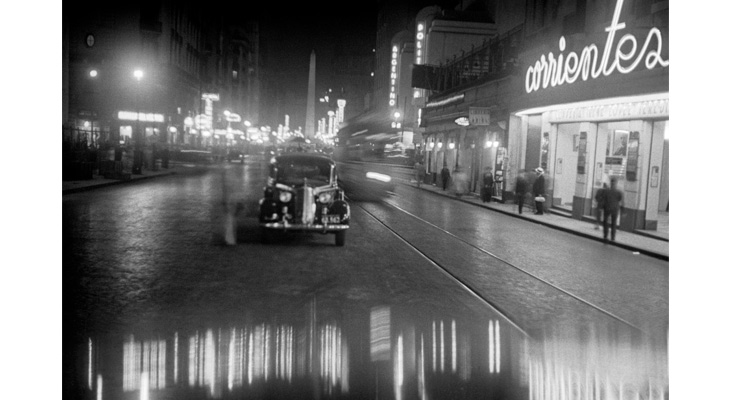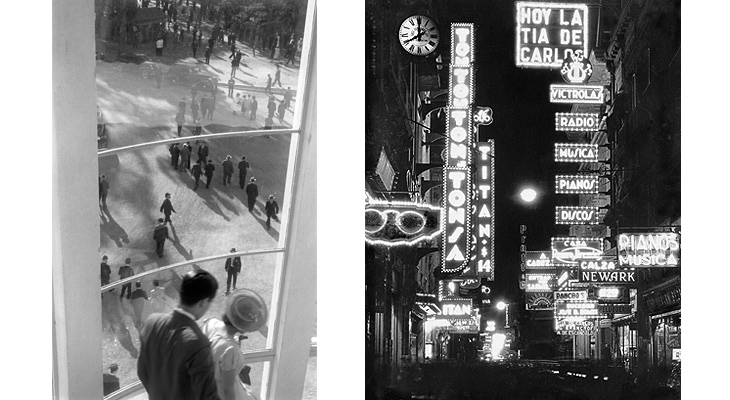Exposiciones
Horacio Coppola. A Photography Exhibition from the Telefónica Collection
Place
Vimcorsa Exhibition Room of Córdoba Council. Córdoba. Spain
Date
21 April 2016 - 21 June 2016
An exhibition of 109 images and four films by Horacio Coppola (b. Buenos Aires, 1906-2012) the leading Argentinian photographer of the 20th century.

corrientes-y-uruguay730
The Vimcorsa Exhibition Room of Córdoba Council and Fundación Telefónica present from 21 April to 21 June 2016 “Horacio Coppola. A photography exhibition from the Telefonica Collection”, an exhibition of 109 images and four films by Horacio Coppola (b. Buenos Aires, 1906-2012) the leading Argentinian photographer of the 20th century. The exhibition can be seen in Córdoba Council’s Vimcorsa Room from 2 April to 21 June 2016. In 2008 Fundación Telefónica displayed what was at that time the biggest exhibition of his work in Spain, which revealed his modern perspective.
In total harmony with the artistic languages of New Objectivity, Buenos Aires-born Coppola frequented the last years of Bauhaus, led at that time by Mies Van der Rohe in Berlin. Towards the end of the 1920s Coppola was responsible for a complete break with the Pictorialist tradition. In the biggest exhibition held up to that time in Spain, Fundación Telefónica revealed Coppola’s modern vocation in Madrid in 2008, which from the start made photography an autonomous artistic language, brought to life through geometry, abstraction and urban architecture.
The photography of Horacio Coppola
Recognised as the Buenos Aires photographer par excellence, the Argentinian artist, born in 1906, was responsible for introducing the first modern look in the history of Argentinian photography. What exactly does it mean to be modern, in the context of the 1920s and 1930s, in a “bustling city, one full of dreams”?

Coppola reveals an early predilection for geometry and abstraction, as we can see from his early images taken in the late 1920s in an unmistakable avant-garde style, in harmony with the New Vision movement. His transition through Bauhaus in Berlin in 1932 and 1933 strengthened this view and placed it in harmony with international avant-garde artistic trends.
In the urban landscape of Horacio Coppola, both in the modernist centre as much as on the edges which blur the horizon and the sky, the leading role is undoubtedly the city itself. It is the crowds, the snapshots of bodies and the movements of passers-by who leave a record of time through the changing fashions. It is a city which, photographed from its different social groups and architectural features, imprints its overall vision on the individual memory of those who end up becoming its characters.
The city’s grid design rose to dizzy heights and in 1936, on the occasion of the 400th anniversary of the Argentinian capital, Coppola devoted himself to making a complete record of it. In the urban maps of Horacio Coppola, we discover a modern city, outlined by the height of its buildings, where natural light is blended with the artificiality of neon and where the geometric styles of awnings protect the mannequins in shop windows. We are before a Baudelarian crowd of a city which reveals a European and cosmopolitan outlook in the first half of the twentieth century.